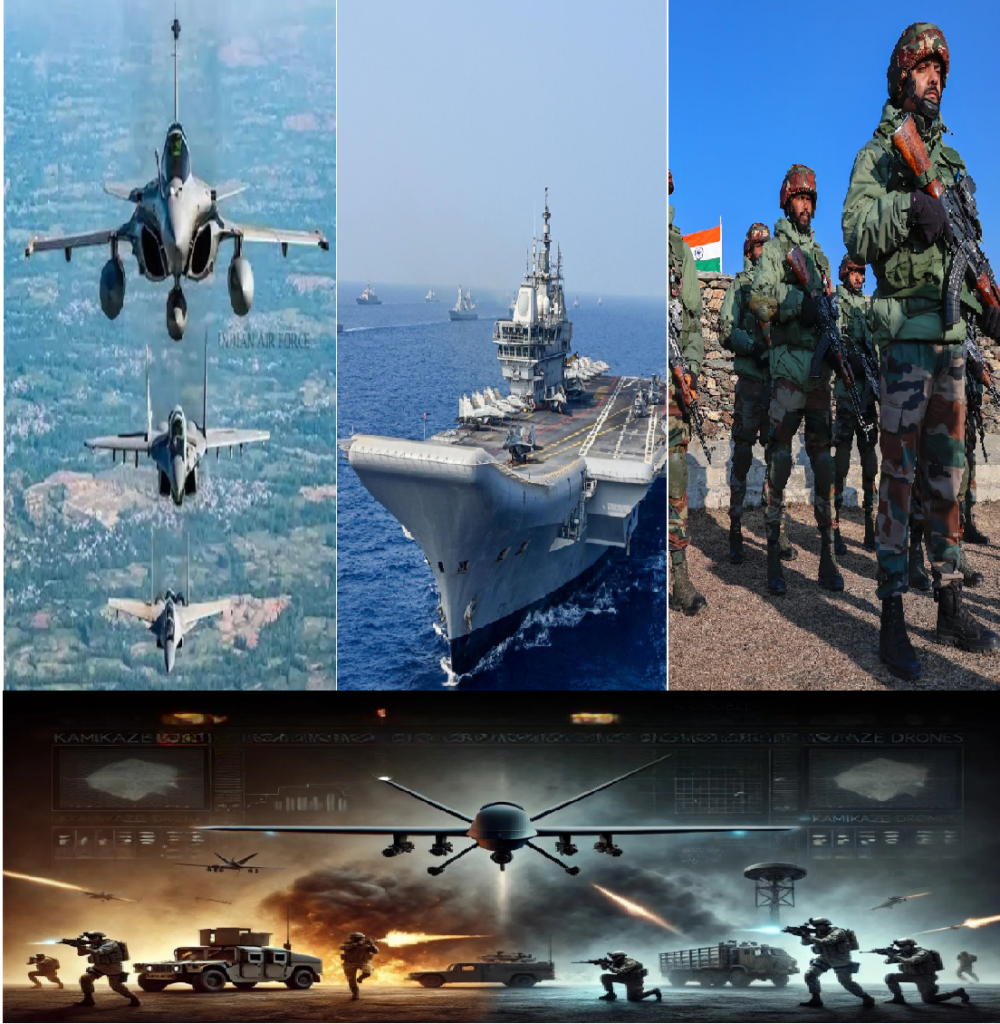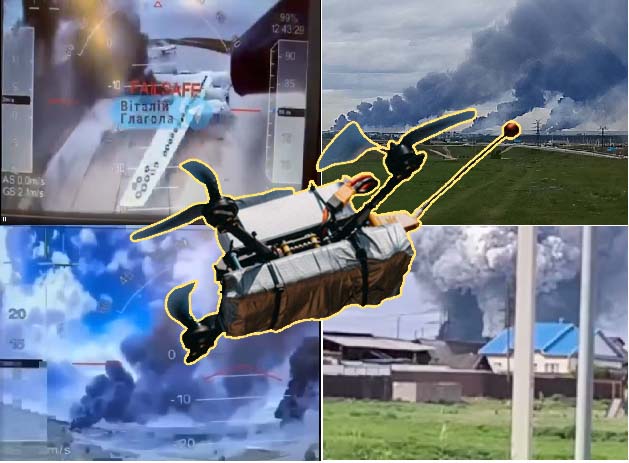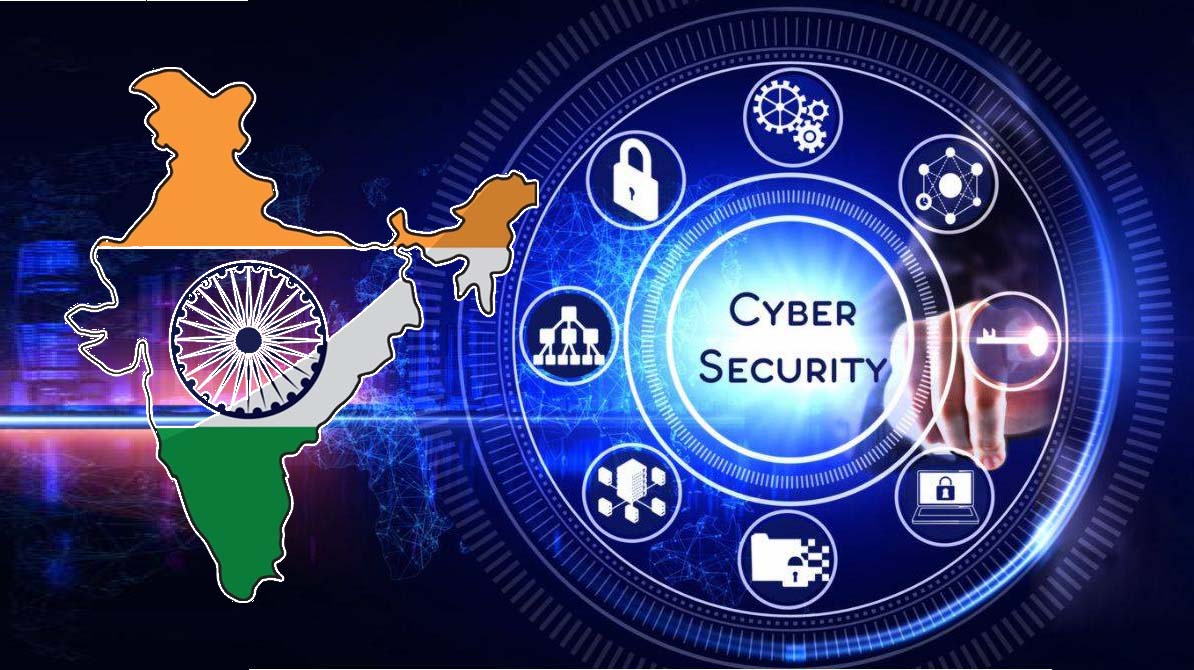
- An overarching ‘long-term’ strategy has always led to procrastination and yet more imports in the short term, which translates into a long-term painful import dependency compromising the very logic of strategic autonomy.
- Informational dominance could be attained through a more robust understanding of the nodal points of the enemy side for which depend on communication, coordination, and logistics.
- Proliferation of UAVs as weaponised instruments for war is for everyone to see, but the pace of the same will be much greater now.
- Cyber-attacks can also start conflicts between two countries, initiated by a third country that benefits from that conflict.
(This is Part 2 of a series on India’s Strategic Pathways. Part 1 can be read here.)
Designed to Kill, Destined to Thrive
Security that prioritises demonstrability is limited to deterrence rather than achieving decisive outcomes in conflict. In the case of India, demonstrability could be understood as a syndrome not just in the security domain, but also in the economic domain. Security must be demonstrable as well as determinative. The Indian indigenisation of its security architecture process must acutely account for the uniqueness of its circumstances and start on a road less travelled. A strategy that is very wary of the short-term demands while having an eye for the long term, where those unrecognised asymmetric opportunities are kept in focus.
Conventional superiority must be overwhelming to balance against the threats it faces in the region, for such an overwhelming force to be acquired by India means it must not only grow but also outpace in singular technologies in the neighborhood, which shall not be an easy task, as all the economies of the region are growing. This is particularly true since China represents a departure from a world dominated by a single power, a dynamic that smaller countries in the region exploit.
Undone by Drone
Using drones was a revealed preference of Pakistan, where an attempt was made to overwhelm the Indian defences. Drones have been a choice and a very effective one at that for those who face odds where they are faced with a conventional force much greater in strength than their own. Such has also been the history of Unmanned Aerial Vehicles. Israel’s Heron was an invention out of the necessity created by its position of vulnerability faced against the absolute conventional superiority of the combined strength of the Arabs.
Recently, Kabir Taneja, in one of his articles, wrote that in 2017, while the American forces were in Iraq fighting ISIS, General Raymond Thomas, then head of the special operations, said that for a time, ISIS had tactical air superiority because of their drones (Taneja). ISIS acquired such mastery of drones from scratch; it proliferated into a lethal force capable of challenging American air dominance. Proliferation of UAVs as weaponised instruments for war is for everyone to see, but the pace of the same will be much greater now. Though India does have a conventional superiority against Pakistan, which shall persist at the current pace of things for the foreseeable future. Yet, for a limited war scenario where India attains its objectives swiftly with escalation dominance at all stages of its operations, it requires not only conventional superiority, but overwhelming dominance.
To attain the same in the short term would be unwise, given that it would come in the way of India’s other form of commitments to security, such as to secure Indians from the depredations of poverty. Invariably, there is the fundamental reality that defence spending is, after all, limited, and an opportunity cost is always there. Israel has no self-designed aircraft, but they have an expertise in UAVs, and India, although it has indigenously built aircraft, has not been able to replicate the success of Tejas to more unexplored grounds. One could argue that India has already lost the first mover’s advantage by some margin in terms of aircraft. When one considers the investment in not only the aircraft itself but also the training associated with each aircraft, the pilots, the physical demand, etc., when compared to the minimal investment required in training a few in how to control and operate UAVs through a remote control without risk of death, it makes more sense.
India may not have enough manpower to expend in war, but always enough to be employed and become tech savvy, which could also be translated to other sectors in the circular economy. On the edge of speed, that aircraft has over UAVs; it is being limited in scope by not considering the reality that there was a time when aircraft were either too slow or too fast to be kept under control. The perfect balance is yet to be achieved. There is also no reason why, without good targeted investment in it, speed could not be multiplied.

India should also be wary of the fact that no generation of aircraft could potentially give absolute air dominance, that is, not to say, UAVs can do. But what UAVs can do is the proliferation of production, in the words of Stalin, “Quantity has a quality of its own“, and with each incoming variation, infinitesimal changes can be made in such a way that variability can outmanoeuvre the capability of a particular defence system. Once circumvented due to sheer quantity and the supply chain being more resilient, production of the specific in a short span gives a competitive edge, especially in limited war situations. Technologization of warfare as a discourse was long overdue, primarily led by two reasons: a lack of imagination regarding Pakistan, and perhaps an inflated fear of China’s conventional capabilities. It was always time that we started to discuss the same, after all, it is a reality that India is a big country as well as a big target in a neighbourhood that is finding it hard to digest the reality of India’s absolute dominance in the region in terms of national comprehensive strength.
An overarching “long-term” strategy, in all probability, has always led to procrastination and yet more imports in the short term, which translates very easily into a long-term painful import dependency compromising the very logic of strategic autonomy. The process of indigenisation does not have to be wrapped around political sloganeering, because that limits the political class’s optionality. That is to say, prioritisation is the need of the process whereby a strategic direction is provided, which recognises certain immediate dangers and also opportunities India is best placed to take advantage of. It must be a painstaking process for a country as big and ambitious as India, which could be sensed as a loss of agency, but Realpolitik dictates that time is the most fundamental currency worth striving for.
Game of Cyber Tryst
Strategic investments in the cyber domain could yield exponential advantages for India. While the demonstrability of such capabilities is inherently limited, their impact can nonetheless be highly decisive. For instance, the news of Karachi Port being attacked by the Indian Navy was a false alarm. Yet, if India had managed to de-operationalise the port through cyber means, it would have severely undermined Pakistan’s credibility. Such false alarms can serve as a smokescreen for more coordinated attacks on critical strategic infrastructure. It is often argued that the cyber domain’s greatest advantage is the credible deniability it provides to attackers. This means the victim usually cannot identify the attacker with sufficient certainty, complicating any decision to retaliate without risking unintended escalation. Furthermore, if a country cannot attribute an attack confidently, it likely also lacks the means to inflict damage on the attacker that exceeds the harm it has suffered. Thus, the inability to pinpoint the aggressor often reflects a limited capacity for effective retaliation, reinforcing the asymmetric nature of cyber conflict.
For a country to respond to a cyberattack with its own cyber capabilities, strategic stability requires the formulation of a dedicated cyber escalation ladder, with clearly defined rungs reflecting escalating levels of damage. For example, an attack on an electric grid may inflict more economic damage, but the compromise of a military communication system is no less serious. Traditional escalation theory assumes the former is more severe, yet in cyber warfare, this hierarchy may not apply. An attack on a military facility through cyber means carries the added ambiguity of being part of a broader offensive, making it more destabilising. The demonstrability of cyber capability is relatively low for that reason, that is to say, the escalation ladder has a recursive logic, making a cyber-attack limited in scope. That is to say, after a point of escalation, it has to be met with some conventional resistance, and because of the inherent risk of misperception, it has a limited demonstrative effect.

With an exception, demonstrable attacks in the cyber domain are in some sense, are those attacks that are sometimes carried out with an identity to an extent made decipherable, to let the attacked know that the attacker also cannot just attack them, but also can identify who attacked, it is a way to deter cyber-attacks as a precursor to perhaps military action if attempted against it in the future. Securing oneself from cyber-attacks by signalling out its capacity. Although circumstances do lend credence to the identity, for example, a cyber-attack on Rawalpindi can only raise Pakistan’s spectre against India, even if India had nothing to do with it. Cyber-attacks can also start conflicts between two countries, initiated by a third country that benefits from that conflict. The demonstrative effect of cyber capabilities is therefore not only limited by their ambiguity but also by the potential for interference from opportunistic external actors.
From the perspective of the determinative aspect of cyber warfare as an option in asymmetric warfare, it does make tremendous sense for India to invest, after all, all limited wars are fought with a limited objective. And all limited wars also have the element of it, being an informational war. Informational dominance could be attained through a more robust understanding of the nodal points of the enemy side for which depend on communication, coordination, and logistics. If any of the nodal points could be de-operationalised or bugged, then a strategic advantage can be attained.
Existential Choices and Challenges
The traditional model of defence-deterrence has abject limitations in the case of Pakistan, although what India initiated on May 07 shall be a series of choices. Many analysts have argued that through an effective response deep inside Pakistan’s territory, and thereafter successfully defending against the innumerable drone attacks as well as missile attacks of Pakistan, India has exhibited the doctrine of deterrence by punishment. The doctrine had more reinforcement since India systematically degraded the military offensive-carrying capabilities of Pakistan by way of bombing its military installations and bases. Yet, the progressive non-linear shape that the conflict was taking made it amply clear that there were real chances of it transmogrifying into anything but limited. It is also a fact that no war has ever been fought to make it unlimited, all wars begin with express supposed limited objectives and also assumptions of escalation dominance.
India has more than enough reasons to take a relook at its defence budget, and that is not an argument that will be made by the author in this write-up. There is no level of conventional superiority that can provide a level of safety greater than what it already has. “If the military art could be reduced to arithmetic, we would not need any wars”, said the Soviet General Danilevich. It is important to remember that there is no safety in numbers, surely not for India.
India is at the cusp of some existential choices, faced with pervasive challenges, and the choices it makes shall have a level of acceptance of its limitations. Operation Sindoor was one choice, but it was a choice that was singular. For all the choices, it shall face none should be constrained by the past, only informed by history. Shedding the Shibboleths shall be the most gargantuan task at our hands. Choices informed by calculations, not undermined by hesitations.
References:
- (n.d.).
- (n.d.). China’s National Security in the New Era. The State Council Information Office, People’s Republic of China. Retrieved from http://english.scio.gov.cn/whitepapers/2025-05/13/content_117871660.html
- Gupta, S. (n.d.). How can India cure Pakistan’s 7-year terror itch? The Print. YouTube. Retrieved from https://youtu.be/2DRCi2ipXB0?si=8Hl35aTPg7pMSh60
- Joshi, Y. (2022). Hubris, Biases, and Overlearning: A Historical Analysis of How India Missed Pakistan’s Nuclear Coup. Observer Research Foundation.
- Rajgopalan, R. (2024, May 07). Operation Sindoor aimed at the hands that wield the gun, not the brains that control the hand. The Print. Retrieved from https://theprint.in/opinion/operation-sindoor-aimed-at-hands-that-wield-the-gun-not-brains-that-control-the-hand/2617720/
- Taneja, K. (n.d.). Operation Sindoor: There’s A Unique ‘ISIS’ History To Pakistan’s Drones. NDTV. Retrieved from https://www.ndtv.com/opinion/operation-sindoor-theres-a-unique-isis-history-to-pakistans-drone-warfare-8410541
Sushruta Batsya holds an MA in International Relations from the Central University of Punjab. A passionate writer on economics, finance, security, and international affairs, he has contributed to esteemed publications like The Assam Tribune. He served as a Junior Research Analyst at the Institute for Conflict Research and Resolution for over two years, focusing on Northeast India.
